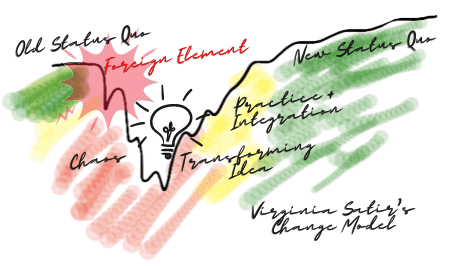In early 2020, we experienced one hell of a change when Covid-19 swept the planet.
On March 13, I flew home from a workshop on the west coast. For the next three months, I only left my house to buy groceries. My status quo shattered, along with everyone else’s. The details of how I responded to this change are unique to me, but on a meta level, we all went through a similar process.
In the days after the shut down, I experienced loss and confusion. My routines blew up. All my in-person business for the second quarter cancelled. Then all my in-person third quarter business cancelled. Like many people around my age, I pondered retirement. There were moments when I just cried.
By April, I’d decided there was still work to be done, and work that I could do.
My first transforming idea was combining synchronous and asynchronous learning for an online course. Then I revived (with a few tweaks) my Q&As that were so popular a few years ago.
I’ve established a new set of routines. Of course, some things didn’t change.
I continue to partner with managers to assess current barriers in their organizations and support them in creating the environment for their teams to thrive.
My leadership and organization development expertise still comes into play in advising leaders as they shape policies and practices that support engagement and creativity in their companies.
I look forward offering PSL and other workshops face-to-face again. Not sure when that will happen. Or what adaptations will make it possible—portable air filtration? Who knows. Until then, I’ll continue to show up, provide value, and support empowered work.
I can’t know what the world will throw at me in the next months. But I can be sure the process will be similar to what Virginia Satir described. A foreign element, followed a period of chaos… until a transforming idea appears. Then practice and integration, leading to a new, if temporary status quo.



